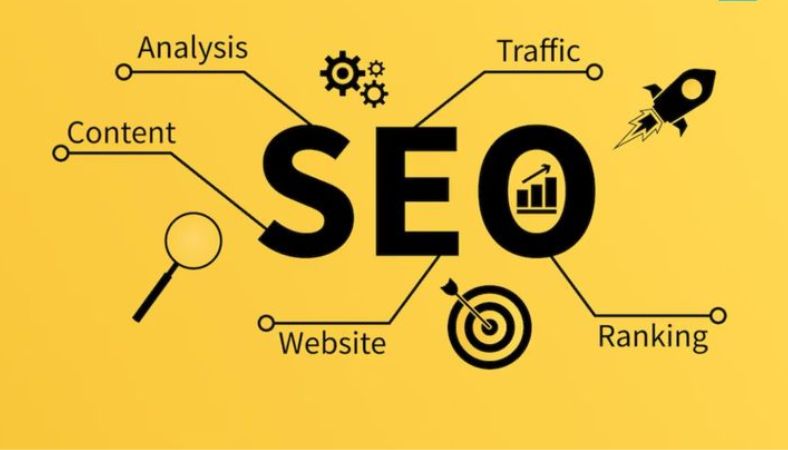Introduction of Image SEO Tricks
Visual content is now one of the mainstays of the internet. If you have a blog, an online shop, or even a corporate site, you know how important images are in captivating your audience. But beyond engagement, images need to be properly optimized for search engines so they can fulfill their true function. This is where Image SEO tricks come into play. Optimize your website with SEO-friendly URLs to improve search rankings, user experience, and site performance.
image SEO motivates you to fine tune the visuals on your website, and often serves as a missed opportunity when it comes to improving organic site traffic. In today’s post, we will examine handy tips to improve your image SEO. Optimizing images with these methods will not only improve visibility in Google image searches, but will enhance the overall SEO health of your site.

The Importance of Image SEO
As part of search engine optimization, images tend to be neglected. But, apart from the visuals, images are essential to user experience, retention, and even the ranking of a website. In an article published by Backlinko, the firm reported that images cover more than 30% of google search results. This should highlight their importance to any user that is still thinking of ignoring image SEO. The benefits that come with optimizing images include:
- Improving your site’s page speed performance.
- Increase traffic coming from image search results.
- Improve the overall experience of the users.
- Achieve SEO gains for your website.
Images that are properly optimized help a website to be found on the traditional web and image-specific searches like Google Images.
Select Appropriate Image Formats
Images optimization strategies have direct impacts with the overall image of the company and website. With websites, images speed has a direct relation to the website’s loading speed which impacts both user experience and ranking.

Common Image Formats for Web Use:
- JPEG: Great for images with regions of rich colors like photographs. It balances image quality and fidelity well.
- PNG: Great for images with transparency or icons. High quality images. Ills-sized files.
- WebP: Newer format files of images. Good for compressing pictures and maintaining image quality.
- SVG: Vector logos and icons. Maintains quality regardless of the scaling.
Improved performance and load times helps to boost page ranking, thereby elevating the website quality on other platforms.
For Images, Size and Compression matter
In order to give users the best experience on your website and improve your SEO rank, you must keep your file size in check. Image files that are too large can slow down your page, which leads to users leaving and damages the overall experience. To reduce image size without losing quality, follow these guidelines:
- Use Compression Tools: Online tools like TinyPNG, ImageOptim, and ShortPixel can lower the quality of the images without file compression.
- Resize Images: Ensure your images are sized appropriately for the specific place within the webpage they are being used. There is no need to use a 4000px wide image if the only size needed is 800px.
- Lazy Loading: Implement lazy loading to postpone the loading of images that are not visible on the screen immediately. This will improve load time and overall performance for the page.
The Alt Text: Use It for Accessibility, Usability and SEO
Adding alt text, or alternative text to images is one of the most frequently missed steps in the optimization process. Doing this not only provides more opportunities for your site to be found, using alt text improves image accessibility as well as gives search engines additional information for indexing your images.
Best Practices for Writing Alt Text:
- Stay Descriptive: Be succinct and relevant while describing what is shown in the image.
- Incorporate into Keywords: Use your alt text to feature keywords, but do not force them in.
- Stay Under 125 Characters: Google usually truncates alt text descriptions to 125 characters, so ensure it is succinct and relevant.
Improving your alt text helps differentiate the content of your images, optimizing them for search queries which improves your rank in both web and image searches.
Image Sitemaps
An image sitemap is a distinct type of a sitemap that is designed specfically to help search engines craw and index your images more efficiently. By making and submitting an image sitemap, you increase all accesses to these images being indexed and utilized in searches.
Image Sitemap Tips:
- Image URLs: Make sure that all the image URLs on your website are captured and included in the sitemap.
- Offer Metadata: Supplement each image with metadata like descriptions and geo-tagging (if applicable) related to the image.
- Submit to Google Search Console: After drafting the image sitemap, submit it to Google Search Console so that Google can efficiently crawl and index your images.
Structured Data Implementation for Images
Schema markup, or structured data, is an effective way to enhance your SEO efforts. Applying structured data to your images enables Google to know extra details like the image’s title, author, and copyright information, which can help in understanding the image better. This might improve how your content is displayed in search results.
Image Related Schema Types:
- ImageObject: A simple schema type that describes an image.
- CreativeWork: Good for providing additional information about things like artwork or photography.
- Product: Useful for e-commerce websites as schema markup for product images can enhance visibility during searches.
Adding structured data increases the chances that rich snippets will be given for your images, which will greatly improve the click-through rate.
Optimization on Images for Mobile Devices
It is important that images are optimized for mobile devices as mobile-first indexing is increasingly becoming a trend. Poor mobile optimization may hinder a website’s Google ranking as Google considers mobile optimization as a ranking factor.
Mobile Image Optimization Tips:
- Use responsive image strategies like HTML’s srcset to deliver the right image size for the device’s screen.
- Mobile users expect fast loading times, so compress images and use WebP formats for faster loading.
- Make sure images are properly scaled to fit the viewport and maintain their proportions across different screen sizes.
Image SEO and Content Relevance
In order for images to rank well, they need to align with the relevant content. Search engines check the relevance of the images to the accompanying text, so images must relate to the content of the page.
Best practices:
- Image Placement Proximity: Position images as close as possible to the relevant content. Use images to support text rather than as mere decoration.
- Image Titles: Provide context to images using captions. Although not directly linked to SEO, captions can boost engagement.
Images should be optimized for SEO and enhance the metrics that matter on your website.
Image Naming Files to Aid SEO Ranking
Naming files for images affects SEO scores. For pictures containing images, computers or cameras label the images in a generic way. It is important to give them names which can be searched easily using keywords.
File Naming Suggestions:
- Descriptive and Relevant: Name files as the images so that the names reflect content of the image.
- Use Hyphens Instead of Underscore: For indexes, underscore is regarded as a word and Google will consider it as a space. Thus, replace _ with – e.g, blue-ceramic-vase is better than blueceramicvase.
- Include Keywords: Use direct words constituting the meaning of the slogan but do not force so many.
Reviewing Resultants Post Processing and Analytics
After finishing all image optimization tasks, active monitoring is needed to derive more insight. Google products like Google Analytics and Google Search Console can be utilized to see how tasks done to images are showing results in searches and check if more work is needed for citing more value.
Important Factors to Monitor:
- Impressions and Clicks: Number of occasions the image is shown to the user and the clicks received.
- Page Speed: How faster or slower a page opens after the images are optimized
- Bounce Rate: How retention of users is affected by image load time.
FAQs about Image SEO tricks
What is Image SEO?
Image SEO is the process of optimizing the images on your website to be more visible on search engines while improving performance and the user experience.
Why is alt text important for images?
Alt text is very useful for describing images, particularly for people who can’t see them. This helps improve the ranking of the image and increases accessibility.
How do I compress images without losing quality?
Check out TinyPNG and ImageOptim. These online services help you save on file size without losing visual appeal.
Should I use a single image format for my website?
It is best to use several formats in different contexts. Websites may require JPEGs for photos, PNGs for transparent images, and WebP for faster loading images.
How do I make my images mobile friendly?
Make sure your images are responsive. Use srcset and other techniques to compress images for better loading times on mobile devices.
Conclusion
Image SEO may not receive the attention it deserves, but it can greatly impact your digital marketing strategy. With these Image SEO tips, you can enhance your website’s functionality, increase user engagement, and improve your position on Google’s search results. The correct file type, as well as alt-text and file size, all influence the image’s potential and can be fully optimized. Implement these tips today and experience heightened traffic and visibility for your site as a result of your image-focused SEO techniques.

